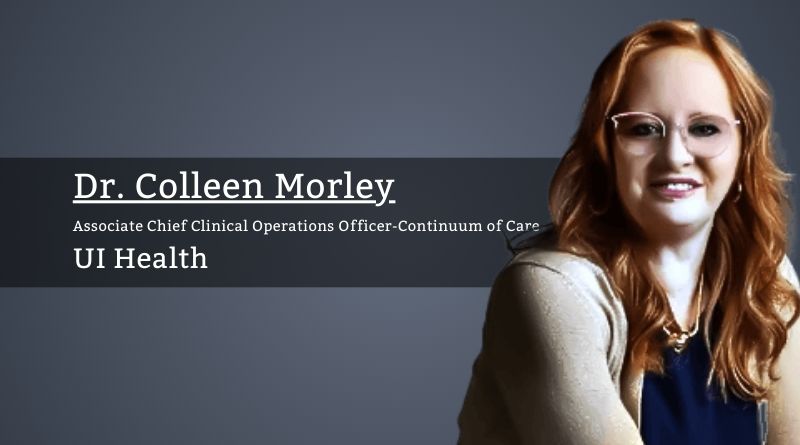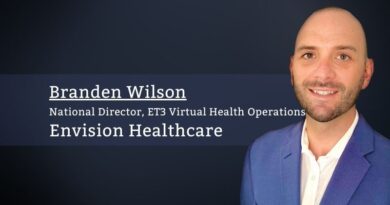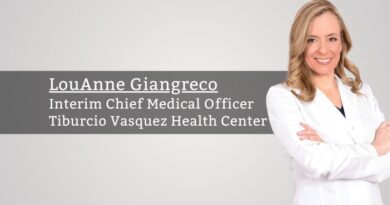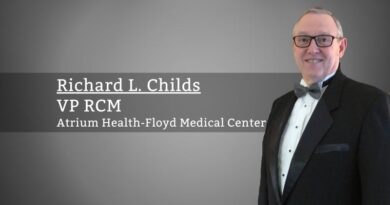From Vital Signs to Virtual Care: The Evolution of Remote Patient Monitoring in Modern Healthcare
By Dr. Colleen Morley, Associate Chief Clinical Operations Officer-Continuum of Care, UI Health
When I first started working on reducing readmissions in acute care, remote patient monitoring (RPM) was just beginning to take off. At that time, it was primarily used for vital sign monitoring, where data like blood pressure (BP) or heart rate would be reported to the primary care physician (PCP) or home health agency. Every home health care (HHC) agency marketer would come to my office, eager to share how they were incorporating RPM into their services to help reduce readmissions.
It’s incredible to see how far we’ve come since then. What started as simple vital sign monitoring has now evolved into an integral part of modern healthcare, with RPM incorporating everything from AI-driven predictive analytics to wearable health devices and sensors. These innovations allow for continuous monitoring, early intervention, and a more personalized approach to care. The integration of telehealth with RPM has also been transformative, allowing providers to oversee care remotely while reducing the burden on healthcare systems. Reflecting on this progress, it’s clear that RPM has moved from a tool focused on reducing readmissions to one that fundamentally reshapes patient care.
The integration of RPM with telehealth platforms has created new efficiencies in healthcare delivery, especially in rural or underserved areas.
Artificial intelligence (AI) and predictive analytics are among the most significant innovations in RPM. These technologies allow healthcare providers to predict potential health issues before they become critical by analyzing patient health information (PHI) collected from wearables and sensors. AI can detect early signs of deterioration in a patient’s heart rate, BP, and oxygen levels, allowing for timely interventions that prevent severe complications. Predictive analytics also personalizes patient care by analyzing historical data to create individualized baselines, helping healthcare providers detect deviations from standard health patterns. This precision-driven approach optimizes resources and enhances patient outcomes by intervening earlier in the care process.
The development of wearable health devices has significantly advanced RPM capabilities. Devices such as smartwatches, biosensors, and skin patches can continuously monitor vital signs, cardiac activity, glucose levels, and sleep patterns. Devices like the Apple Watch and Fitbit have FDA-approved health monitoring features, enabling patients to track their health daily and share the data with healthcare providers remotely. More advanced sensors, such as smart textiles and biosensor patches, are expanding the scope of RPM by tracking hydration levels, detecting arrhythmias, and monitoring medication adherence. These wearables empower patients with real-time data and help healthcare providers proactively manage chronic conditions, reducing the risk of hospitalizations.
Chronic diseases such as diabetes, heart failure, and chronic obstructive pulmonary disease (COPD) are significant contributors to healthcare costs and patient admissions. RPM innovations are helping manage these conditions more effectively by providing continuous monitoring and early intervention, reducing the need for frequent in-person visits. For example, continuous glucose monitors (CGMs) transmit real-time blood sugar data to both patients and healthcare providers, allowing for immediate adjustments to insulin doses or dietary changes. These advancements in RPM are helping patients manage their chronic diseases more effectively while reducing the strain on healthcare systems.
The integration of RPM with telehealth platforms has created new efficiencies in healthcare delivery, especially in rural or underserved areas. RPM devices collect and transmit patient data, which healthcare providers can review via telehealth platforms to adjust treatment plans without requiring in-person visits. This combination allows for continuous oversight and early intervention for patients recovering from surgery or managing chronic conditions, improving care outcomes and convenience. Moreover, integrating RPM and telehealth has reduced the burden on healthcare facilities, enabling providers to deliver timely care to more patients with fewer resources, ensuring that care is accessible, efficient, and patient-centered.
The rise of the Internet of Things (IoT) has further expanded RPM capabilities by integrating smart home devices into health monitoring. Devices such as connected scales, BP monitors, and sleep-tracking systems can provide insights into patients’ daily habits and routines. IoT-enabled devices, often integrated with AI-powered platforms, help healthcare providers monitor patients in their home environments, offering a more holistic view of their health. For elderly patients or those with mobility issues, IoT devices such as smart pill dispensers and fall detection systems offer greater independence while ensuring safety. This integration of IoT with RPM provides patients with continuous health monitoring. It empowers them to manage their conditions in their own homes, reducing hospital readmissions and improving the overall quality of care.
As RPM becomes more sophisticated, ensuring data security and protecting patient privacy are increasingly critical concerns. Protecting sensitive PHI is essential for building trust between patients and healthcare providers, ensuring that data is securely transmitted and stored. Regulatory bodies are actively developing guidelines to govern the use of RPM devices, ensuring that innovation does not come at the expense of patient safety or privacy. These measures are vital for ensuring that the benefits of RPM technology can be fully realized without compromising patient trust or safety.
As technology continues to evolve, the future of RPM and healthcare technology is bright. AI and IoT devices are becoming increasingly integrated into daily life, allowing for even more personalized and proactive care. These advancements will not only improve clinical outcomes but also enhance the experience for both the patient and the provider by reducing burnout, increasing efficiency, and making healthcare more accessible. The real challenge and opportunity lie in continuing to innovate while ensuring that the human connection remains at the heart of healthcare. The tools we are developing today will not only transform how we deliver care but also ensure that it is delivered with greater compassion and understanding.



